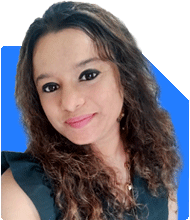Dear FA, I am 35 years old lady and single parent of a 5 years old kid. My take home salary is 75k and a widow pension 3k, so total my income is 78k monthly. I have a home loan of 10Lacs of 3 years Expenditure: 1) Spending 30k/month as EMI 2) 90k School fee/year 3) 60k/ year maintainance of my flat FD savings has 45Lac in SBI, another 4 Lacs in FD, 2 lacs in liquid fund and one RD of Rs.2500 per month in Post Office and recently started investing in two SIPs, 10k each. Each month i can save hardly 15k after all expenditure. Sir, please guide me how i can save more and where i should invest so that after 10- 15 years i can reach 1 crore. Your suggestion will be highly appreciated. Thank You
Ans: At 35 years old, your focus on saving towards a corpus of Rs. 1 crore in the next 10–15 years is both practical and achievable. Let us go through a structured, 360-degree plan to increase your savings, optimise investments, and create a clear path to your goal.
Understanding Your Current Financial Position
Here is a concise breakdown of your current finances:
Monthly Income: Rs. 75,000 (salary) + Rs. 3,000 (widow pension) = Rs. 78,000
Home Loan: Rs. 10 lakh remaining, EMIs of Rs. 30,000 per month for 3 years
Annual School Fee: Rs. 90,000
Flat Maintenance: Rs. 60,000 per year
Fixed Deposits: Rs. 45 lakh in SBI FD + Rs. 4 lakh in another FD
Liquid Fund: Rs. 2 lakh
Recurring Deposit: Rs. 2,500 per month at Post Office
SIPs: Started two SIPs of Rs. 10,000 each per month
Monthly Savings Surplus: About Rs. 15,000 after expenses
You have commendable investments and savings in place. You have loan, insurance, corpus, and savings clarity. Now, we will focus on improving savings by optimising these assets, curbing expenses where possible, and ensuring every rupee works for your Rs. 1 crore target.
Building a Healthy Budget and Cash Flow Plan
Breakdown of monthly outflow
EMI: Rs. 30,000
Flat maintenance + school fees average out to Rs. 12,500/month
Household expenses take up the remaining Rs. 20,500 approximately
This leaves you with Rs. 15,000 in savings
Look for expense savings
Can school and flat expenses be crunched? Evaluate each line item
Is there scope to reduce utilities, groceries, or subscriptions?
Even saving Rs. 3,000–5,000 monthly helps boost investible amount
Accelerating current SIP setup
You are investing Rs. 20,000 monthly in mutual funds
Aim to increase this to Rs. 30,000 by gently reducing less productive instruments
Optimising FD and liquid investments
FDs earn low interest and lack tax efficiency
TDS is deducted regularly, reducing liquidity
Liquid and short-term funds can give better post-tax returns
Instead of immediately breaking all FDs, start by allocating future maturing FD amounts smartly
You are already saving; now let us direct savings more efficiently toward your Rs. 1 crore target.
Short-Term Goal: Clear the Home Loan Smartly
The home loan EMI of Rs. 30,000 per month occupies a large space. You will complete it in 3 years, but you can accelerate and free this cash flow.
Use part of your large SBI FD corpus to prepay the loan if it is cost-effective
A reduction in loan principal shortens tenure and interest outflow
Even a small prepayment annually reduces burden and interest
Once EMI ends, redirect freed-up funds toward your mutual fund goals
By clearing the loan earlier, you free up cash flow that can dramatically speed up reaching Rs. 1 crore.
Emergency Fund and Liquidity Safety
Your deposit of Rs. 2 lakh in a liquid fund is a good start. Post-Office RD can also act as reserve.
Maintain an emergency buffer equal to 6–9 months of expenses including EMI
That means Rs. 2.5–3 lakh should be accessible quickly
Keep this amount in liquid or ultra-short-term funds
Avoid locking this money in FDs or instruments with penalties
This buffer ensures you can handle crises without derailing your investment plan.
Reallocating Existing Fixed Deposits More Productively
You currently hold over Rs. 49 lakh in FDs.
This amount is generating low interest and losing purchasing power due to inflation and tax.
Here is how to phase it out efficiently:
Do not break all FDs at once
Sudden breakup triggers liquidity loss or breakup penalties
Review maturity dates
Let smaller FDs mature in next 1-2 years
Upon maturity, allocate sums into:
Low-cost liquid/ultra-short-term funds (for emergencies and short-term needs)
Short/mid-duration debt funds (for medium-term security)
Balanced/hybrid equity mutual funds (for longer-term wealth building)
Tax advantage
Liquid and debt funds incur gains taxed at slab rates, but shifting earlier begins compounding
This gradual reallocation reduces risk and improves returns over time.
Validating Your Insurance Coverage
You said all insurance needs are met. Let us ensure in detail:
Life Insurance: Term cover should be at least 10–12 times your current income
Health Insurance: Cover yourself and your child adequately
Loan Insurance: Already in place for the home loan—good
At age 35 and as a single parent, you must ensure multipliers are sufficient. Revisit cover every few years.
Educating Investment Allocation for Rs. 1 Crore Target
You aim to build Rs. 1 crore in 10–15 years. This is an achievable goal with disciplined investing.
Why mutual funds are ideal:
Equity mutual funds offer inflation-beating returns in long term
Active funds adjust strategy with market cycles, protecting you in downturns
Index funds simply copy market performance and don’t guard in declines
Direct plan investing may reduce costs, but lacks behavioural guidance
You already have two SIPs of Rs. 10,000 each. Increase them to Rs. 30,000 monthly within the next few months.
Suggested Investment Architecture:
Rs. 30,000 per month for 10–12 years
70% in diversified equity mutual funds
30% in hybrid equity-oriented funds
Staggered top-up from exiting FD
Add Rs. 20,000–30,000 monthly once FDs mature
Rebalance every year to maintain equity-debt mix
RD continued
Rs. 2,500 per month is fine, acts as reserve
Consider swapping RD to mutual fund SIP after emergency buffer is secure
Use Systematic Investment Plans through regular mutual funds to spread risk and improve discipline.
Aligning Investment Strategy with Your Time Horizon
You seek Rs. 1 crore in 10–15 years. Investment strategy should suit timeline:
First 5 years: High equity exposure (75–80%) to grow corpus
Years 5–10: Maintain equity, add hybrid funds to reduce volatility
Last 2–3 years: Shift gradually to debt/hybrid to protect capital
This dynamic allocation secures growth and reduces potential loss as the target nears.
Systematic Rebalancing and Monitoring
Review your portfolio annually
If equity component grows beyond 75%, shift excess to hybrid or debt
This controls risk and smooths returns
Your CFP will help with tracking and analysis
Regular plans make rebalancing easier through consistent guidance
Without discipline, portfolio could drift too risky or too safe. Regular oversight is key.
Optimising Tax Efficiency
You will face capital gains taxes along the journey:
Equity funds: LTCG above Rs. 1.25 lakh taxed at 12.5%
Short-term gains aggregate taxed at 20%
Debt and hybrid taxed as per normal slabs
Keep investments long-term to minimise tax. Avoid frequent switching. CFP can optimise redemption timing and tax liability.
Potent Supplement: Increasing Income Streams
Your monthly savings capacity is limited by your income. With time and planning, you can increase capacity:
Boost salary savings
Any salary increment should go into investment
Tax-free components and EPF contributions can help
Monetise unused skills
Freelancing or tutoring could bring Rs. 5–10k/month
This directly strengthens SIP capacity
Use rent or asset income (if applicable)
Reallocate bonus or any irregular income to investment
These boosts may accelerate your path to Rs. 1 crore.
Managing Risks and Contingencies
Keep home and term insurance valid through the period
Extend health insurance to your child
Update beneficiary nominations
Maintain liquidity buffer so you don’t withdraw during market crashes
Avoid investing in unregulated schemes, gold, or cryptocurrencies
Your CFP will help you stay disciplined during emotional market swings and sudden life changes.
Tracking Your Progress Over Time
Maintain a goals tracker with details:
SIP contributions, NAV history, and fund performance
Total corpus accumulated vs goal amount
Time remaining and required monthly investment
Adjust SIP contributions annually based on performance and income changes
This transparency helps you stay confident and focused on your target.
Final Insights
You are on strong footing with clear goals, disciplined saving, and safety covers. Now, redirect FD savings gradually into equity and hybrid mutual funds. Boost monthly SIP to Rs. 30,000 and plan to increase further as income grows or home loan ends. Keep a robust emergency buffer, maintain insurance coverage, and re-balance annually. By staying goal-oriented and maintaining discipline, you can build a corpus of Rs. 1 crore in 10–15 years.
Act-driven steps today will yield peace and security tomorrow for both you and your child.
Best Regards,
K. Ramalingam, MBA, CFP,
Chief Financial Planner,
www.holisticinvestment.in
https://www.youtube.com/@HolisticInvestment














.jpg)













